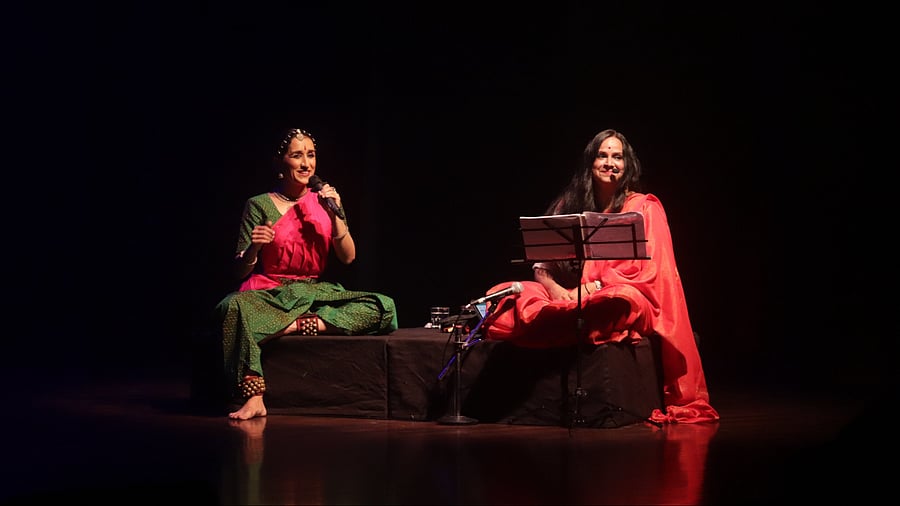
Credit: Special Arrangement
Collaboration has been an essential and inherent part of artistic creation. Over the recent years, this latent aspect of the artistic process has manifested significantly, adding dimension, diversity and depth to the creative outcome. Collaboration creates a democratic environment for ideas to flow. Whether it is artistes from related or parallel streams, a collaborative approach that holds calibre and mutual respect at its core, enriches the process and elevates the artistic outcome. The audience it organically draws is a significant and valuable collateral.
‘Mandala’, an interaction between Kuchipudi artiste Amrita Lahiri and musician Chandana Bala Kalyan, demonstrated the qualities of an exciting and enriching collaboration. Curated originally by dancer-choreographer Mayuri Upadhya for the Serendipity Arts Festival, and directed by veteran dancer Leela Samson, the work navigated around the elusiveness in the process of seeking, taking the path of a ‘Mandala’, as the name suggests. It started with the outer circle of love (Shringara), to separation (Viraha), gravitated towards disillusionment (Maya), and finally to the ultimate realisation and dissolution (Aikya), with the words and wisdom from saint-poets of India.
A conversation with the artistes unpacked some moments and details from the collaborative process. Speaking of where and how the collaboration started, Chandana said, “The sonic element can be an experience in itself, and a visual element can sometimes come in the way of the experience or the manodharma, which makes it challenging.”
“The pieces that are a part of ‘Mandala’ seemed way out of my syllabus, coming from the Vempati style of Kuchipudi being characterised by the heavy Nritta,” Amrita added.
From these starting points, they spoke of their numerous initial conversations, chasing and trying to hold the elusive and heavy idea of Maya with swaras, with laya and with raagas, and finally chose to uncover it in layers. “We sent choices for compositions back and forth, responded and played off each other’s thoughts and ideas,” they shared. In the process, the conversations extended to their own lives, family, friendships, gurus and artistic journeys.
Thereon, they spoke about shifts in the typicality of their mindsets as artists. Amrita shared that while it was intimidating to dance something so bare and stark in terms of content and choreography, it magically gained dimension and came alive with the music. With a beautiful demonstration of one of the Annamacharya compositions that was part of ‘Mandala’, Chandana gave an instance of how she felt inspired to modulate and mellow down her voice to reflect the meaning conveyed by the dancer, where she would otherwise emphasise or augment it to bring in the percussion. It was apparent from the conversation that the collaboration became about creating an experience, allowing one to sometimes be directed by the other, and sometimes to be carried away into an improvisation inspired by the other.
Intentional minimalism was apparent in the artistic choices of ‘Mandala’, in the choice of using nothing but just the voice along with simple instruments like a ukelele and a tambourine, or the resistance to falling back on the grand splendorous movement — to stay true to the experience. There was a nod of agreement from the artistes, saying that minimalism is definitely a goal, not just in this collaboration, but also in their artistic pursuit. Such artistic choices allow music and dance to be a medium for the concept to flow through.
The transition from disillusionment (Maya) to dissolution (Aikya) in particular was marked by a riveting moment with Kabir’s poetry in Raag Bhatiyaar. The choice of Raag Bhatiyaar, a Raag of the fourth ‘prahar’ or the last quarter of the night, when the crack of dawn breaks through the darkness, could not ring more appropriate. It served as a musical metaphor for the light of realisation tearing through disillusionment, that echoed well after the applause for the evening faded.